Replacing Spark Plugs on a T5 P1 Volvo
If fuel economy starts to decrease, the vehicle looses a bit of peppiness, or you get the occasional misfire, it is definitely time to replace the spark plugs. Volvo suggests replacing the spark plugs every 60 thousand miles. However, many turbo Volvo owners have found this interval to be too far spread. Spark plugs should at least be checked every 10 thousand miles, especially if you push your vehicle to the limits. Many Volvo owners have settled for 30 thousand mile intervals to replace spark plugs.
Copper, Platinum, or Iridium?
Copper plugs are common on naturally aspirated cars and occasionally used on turbo engines. They are the cheapest of all spark plugs, with a lower melting point than Platinum and Iridium. If you choose to run copper plugs on a turbo car, only expect them to last about 20 thousand miles.
Platinum plugs offer better longevity and performance than copper plugs. They are often the original plugs equipped on turbo and other performance vehicles. However, many platinum plugs have different electrode insulators which can become clogged or covered with oil on higher mileage cars. They are also a bit pricey compared to their copper counterparts.
Iridium plugs are considered the fan-favorite when it comes longevity. They are also being used as the standard plug in many modern cars and trucks. The iridium material can withstand higher temperatures and is more resistant to corrosion than platinum and copper. Like all the advertisements, iridium plugs will definitely last longer. However, they should still be examined on regular intervals for wear.
Judging spark plug wear to determine other problems.
When removing spark plugs, it can be expected that the plug may appear dirty, the electrode and ground may be slightly corroded, and the electrode to ground gap may have widened since installation.
If a spark plug has oil contamination, it is an indicator that seals are beginning to leak. A bit of oil on the spark plugs is a common on vehicles with over 200 thousand miles when seals are certainly beginning to fail.
Carbon build up on the spark plugs is usually a symptom of dirty injectors or a dirty air filter.
A spark plug that looks burnt is likely due to overheating or improper air/fuel ratio. This can be the result of a timing issue, but this can also be the result of running original specification plugs on a vehicle that has been modified and tuned for performance.
What are step colder plugs and when should you run them?
"Step colder" plugs are not plugs which burn colder, but plugs which help transfer heat so that the igniting portion of the plug resides cooler. If a spark plug gets too hot, it may prematurely fire, which can cause harm to engine internals.
Step colder plugs are usually only necessary on vehicles with modifications which alter combustion. Typical bolt on intakes, intercoolers, and exhaust systems will not require anything special. However, certain stages of software tuning may very well require different plugs. Your tuner can suggest which plugs will be ideal for your setup, but the general rule of thumb is to run one step colder plugs for every 100hp that you have added to the vehicle.
On my Volvo T5 V50, which is completely stock, I opted for NGK Iridium spark plugs in the same temperature range as the Volvo plugs. When purchasing any aftermarket brand plugs, be prepared to gap them prior to install. While most Volvo plugs come pre-gapped, it is always worthwhile to double check spark plug gap.
Gapping the plugs requires adjusting the gap between the electrode and the ground to the specified range for your vehicle. A simple spark plug gap tool can be purchased from FCP Euro.

Volvo recommends a gap of .026-.028 inches. Gently pry the spark plug ground upwards or downwards until the desired gap is achieved.
P1 T5 spark plug replacement
Necessary Tools:
- Flat heat screw drivers
- 10mm socket
- 8mm socket
- T27 torx bit and driver
- Ratchet with a 6" extension
- Spark plug socket
- Torque wrench which can register 22ftlbs
- Anti-seize grease
- Dielectric Grease
- Five Replacement Spark Plugs
1.) Using the 10mm socket, remove the bolt which holds the intake pipe to the engine block. This allows the intake pipe to flex far enough out of the way to replace the spark plugs. However, to gain additional access, you may use the flat head screw driver to loosen the band clamps on either end of the intake pipe and completely remove it from the engine bay.
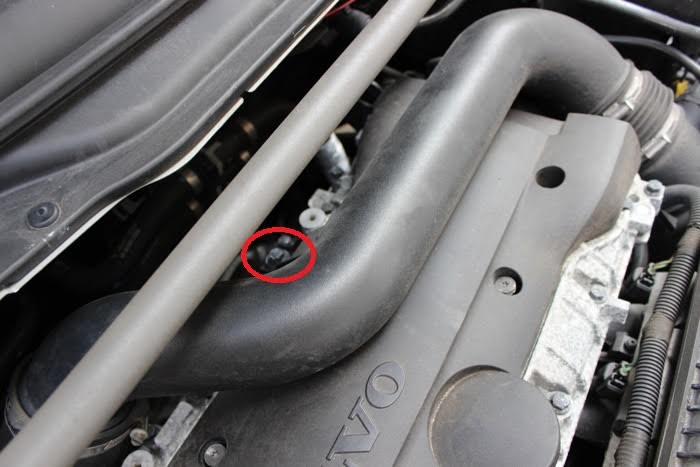
2.) Using the T27 torx driver, remove the screws which hold the spark plug and timing belt cover in place.
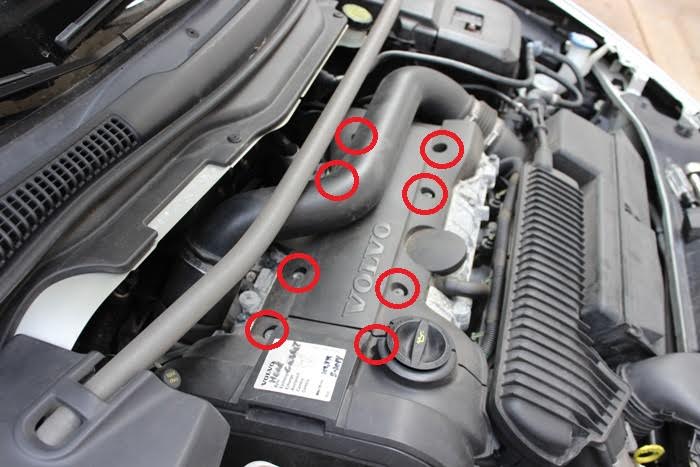
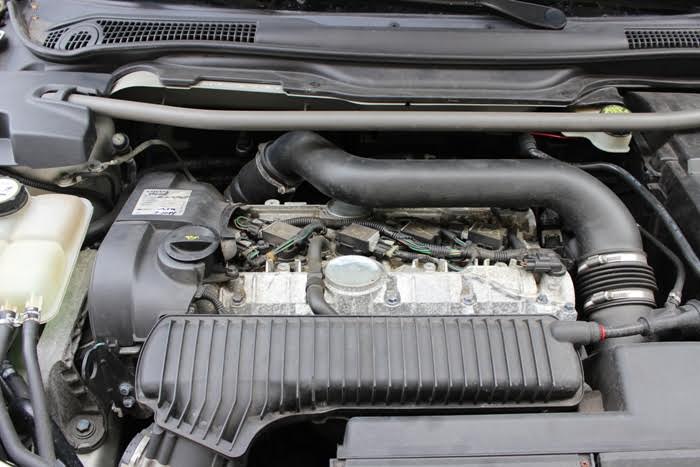
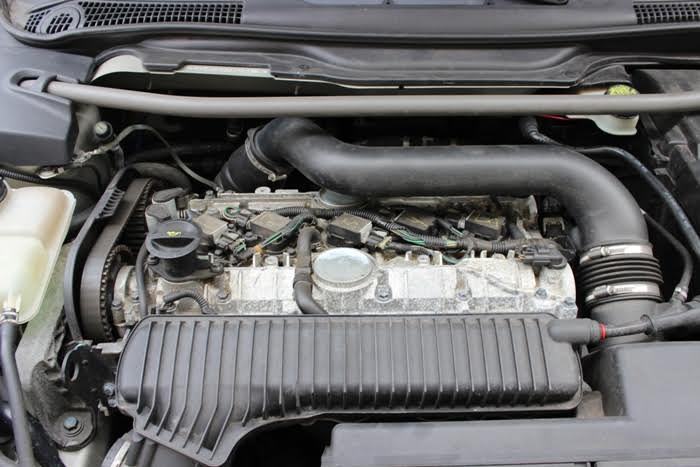
3.) Disconnect the wiring clip running to the coil pack.
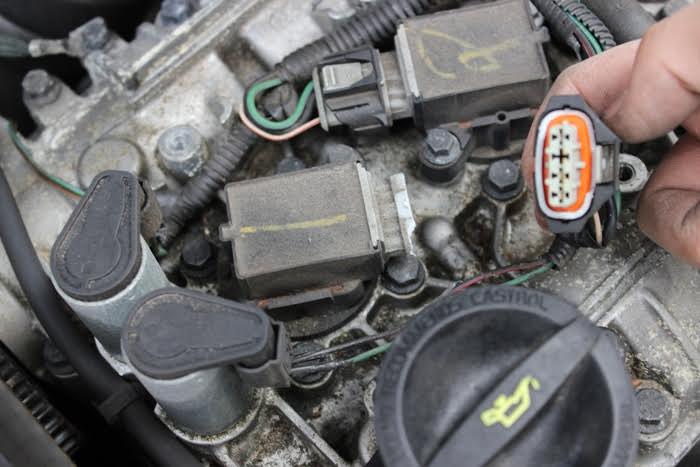
4.) Using an 8mm socket, unscrew the small bolt which holds the coil pack in place and pull the coil pack straight out.
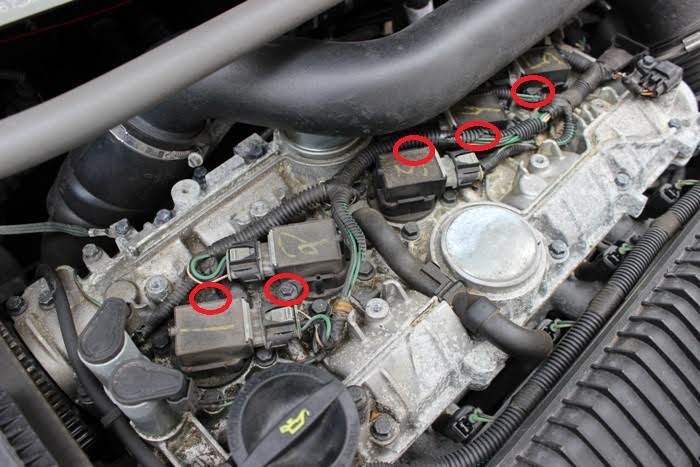
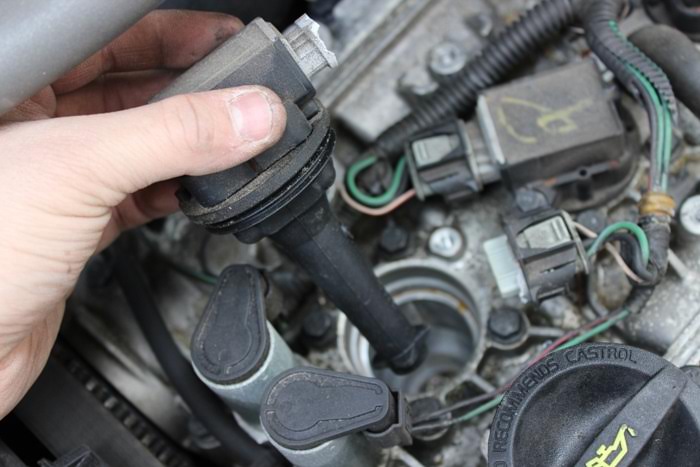
5.) With the spark plug now visible, use the spark plug socket and extension to remove the old plug.
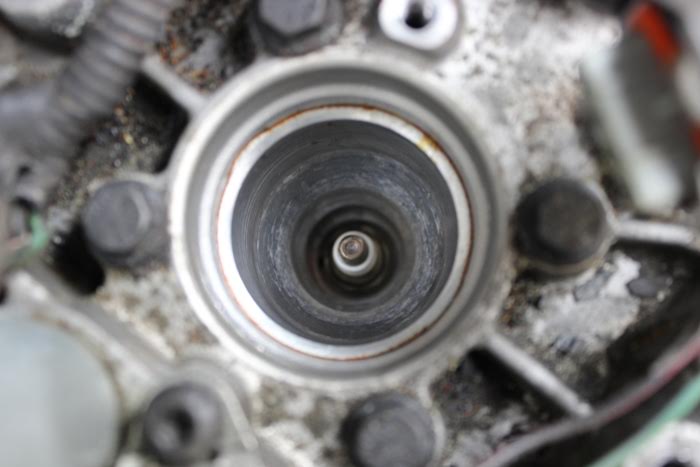
6.) Prepare your new plug by gapping it appropriately, then applying a small amount of anti-seize grease to the threads.
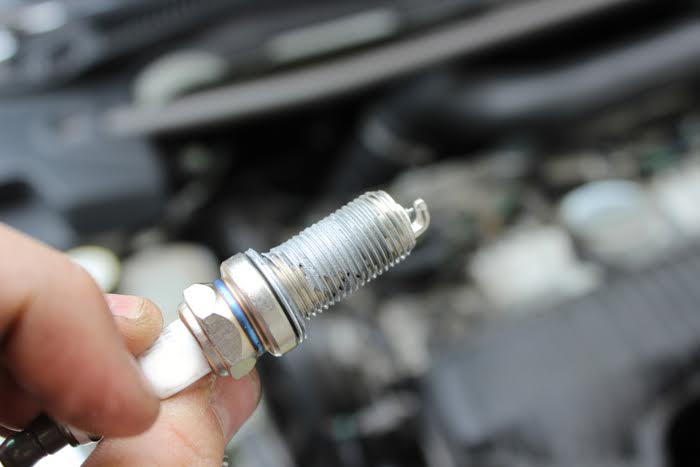
7.) Insert the spark plug and only tighten by hand. It can be easy to cross thread spark plugs if you are not careful.
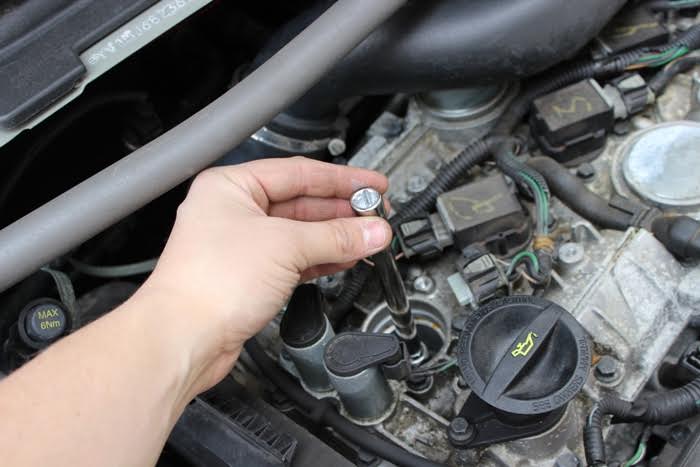
8.) Once the spark plug has been tightened as far as you can go by hand, use your torque wrench to tighten it to 22ftlbs.
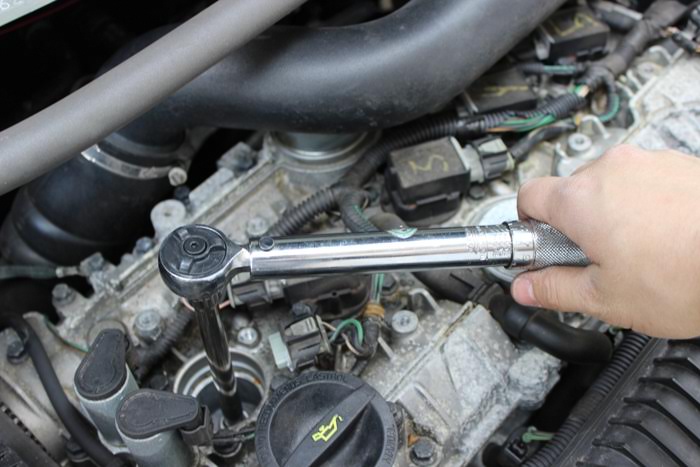
9.) Replace the coil pack and use some dielectric grease on the wiring clip before reconnecting.
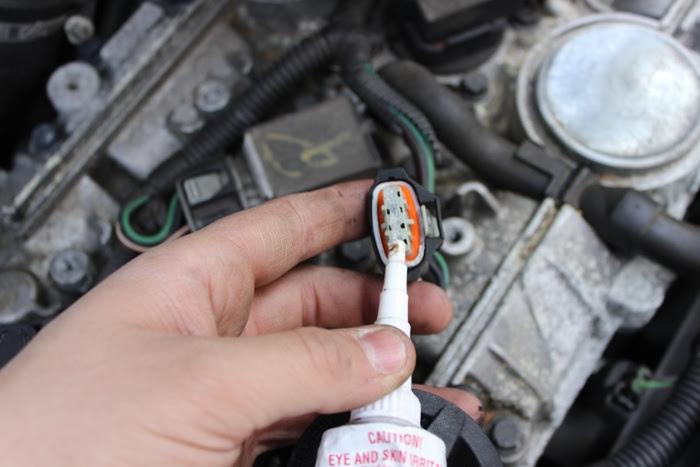
10.) Repeat steps 3-9 for the remaining spark plugs.
11.) Before replacing the engine covers and intake pipe, clean out any dirt and debris which may be sitting on top of the engine block.
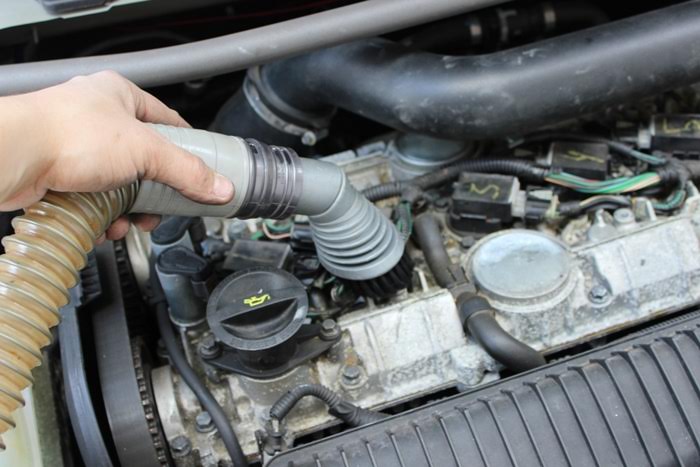
With the spark plugs replaced, the car should idle and accelerate smoothly. If you detect a misfire, double check the spark plug gaps and confirm that all coil packs are reconnected and functioning properly.











